The rendering, by the Boston-based Elkus Manfredi Architects, shows a pleasing little city in the woods. It’s a dense, amoeba-shaped cluster of mid-rise buildings, some sporting green roofs or expansive photovoltaic arrays. Maybe it isn’t the most radical architectural vision, but it’s a solid, forward-looking, optimistic one. The project is called Union Point, planned for what was once the South Weymouth Naval Air Station. During World War II, the base housed a fleet of blimps that patrolled the East Coast for German U-boats; like many such bases, it was decommissioned in the 1990s. More recently, for the past year or so, it’s been repositioned as a smart city.
LStar Ventures, a Raleigh, N.C.–based developer that acquired the 1,500-acre site in 2015, aspires to attract technology firms and their employees to Union Point, where self-driving cars will rule the roads and residents can hack their lives with a series of apps. Or, as David P. Manfredi, FAIA, put it in a blog post more than a year ago (Elkus Manfredi drafted the master plan with Sasaki), Union Point will be “a connected urban environment that integrates multiple information and communication technologies to manage a city’s assets, improve the efficiency of services, and meet residents’ needs.”
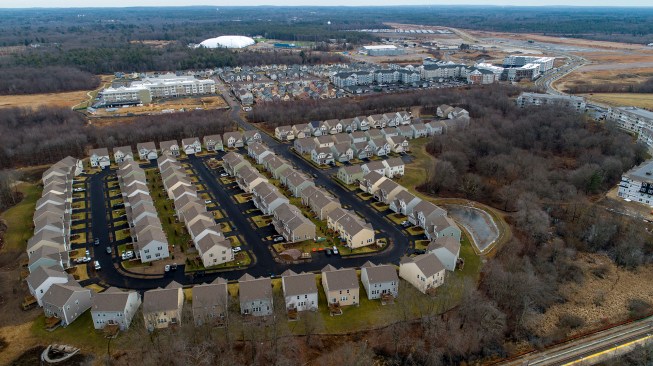
Tom McMahon
Housing at Union Point
Every city lately, it seems, aspires to be smarter. Tech firms almost universally are eager to install sensors to collect every bit of data city dwellers generate as they go about their lives. They want to use that information for efficiencies large and small, to distribute electricity more effectively or monitor the availability of treadmills at the gym (a convenience touted by the developers of New York’s Hudson Yards). Everyone feels compelled to optimize everything.
Most smart city projects in the U.S. involve retrofitting existing cities: setting up an energy-efficient electric grid in Boulder, Colo., or helping drivers find parking spaces in San Francisco. Smart cities built from the ground up tend to be in Asia or the Middle East, and when they are located here, such as the Bill Gates–backed Belmont outside of Phoenix, they tend to involve remote sites in the desert southwest. So it was a welcome surprise to discover that someone was planning to build a 21st-century city, from the ground up, on the stodgy East Coast. Once I got beyond the renderings, however, I soon realized that Union Point was more a case study in smart city hype outpacing reality.
“Being the Future”
Unlike a lot of schemes that never get past the clickbait phase, Union Point, at first glance, is entirely logical. It’s in greater Boston, home to MIT and Route 128, a ring road that has become Silicon Valley East. Route 128 doesn’t extend all the way to Weymouth, a blue-collar town about 12 miles south of center city, population 55,664, which saw its last major growth spurt when school desegregation plans in Boston in the 1960s and ’70s triggered white flight. But that was the beauty of the Union Point plan: It promised to transfuse some MIT-inspired luster into Weymouth. As LStar’s website puts it: “Union Point is where artful design meets green living, where the landscape inspires human potential, where life itself feels expansive.” The website artfully blends renderings showing a lively pedestrian-oriented commercial district and photos of existing homes, the sort of faux-historic cottages that are common to New Urbanist influenced developments, as well as some unremarkable apartment complexes. “What makes Union Point distinctive? Urban technology partners, such as GE, Arup, and Optimus Ride, are working with our developers to build in resilient energy systems, sustainable design, and fuel-free transportation alternatives. Energy efficiency translates into cost savings and consumer approval. That’s not getting ready for the future—that’s being the future.”
By the time I called Mayor Robert Hedlund of Weymouth in mid-November, reality had already intruded on that breathless sales pitch. About two months earlier, LStar had filed suit against Kyle Corkum, one of the company’s own managing partners and the person directly in charge of Union Point. The mayor himself had just entered into the fray. “I just shut their water off,” he told me—or at least he had on paper.

And so I drove up from New York to try and understand how the project had come undone. Union Point, accessible via a gateway decorated by a Navy jet mounted like a hood ornament, isn’t especially smart. As it stands now, it’s a somewhat disorganized cluster of residential subdivisions, with 1,200 units built so far out of a proposed 4,000. They were constructed by your standard production home builders, such as Pulte and Stonebridge, and sit tightly spaced, a nod to one of the most developer-friendly ideas from New Urbanism: smaller lot size. There are areas with narrow streets abutting town greens, and other areas with cul de sacs. One street is lined with triplex McMansions—three connected housing units, each with its own street-facing front door, and three shockingly wide garages. There are also a number of apartment complexes; the slickest is called the Mastlight, named for the beacon that used to guide the Navy’s blimps home. It had a prominently placed bike rack out front, with a single bike-share bike docked there, and a strategically positioned row of red Adirondack chairs that seemed like a beacon to lure young, hip tenants.
As for all that street life shown in the renderings, not to mention the green-roofed office complexes? Those have yet to materialize. The day I visited was cold and rainy, but still, there isn’t really anywhere for pedestrians to go. The only occupied storefront is a bank. Even the recreation center, a massive white bubble that’s become a destination for area sports teams, lacks a concession stand. “You have to drive 2 miles out of there just to get a Gatorade,” notes Jessica Trufant, a reporter for the local paper, The Patriot Ledger, who’s been meticulously tracking the development’s progress.
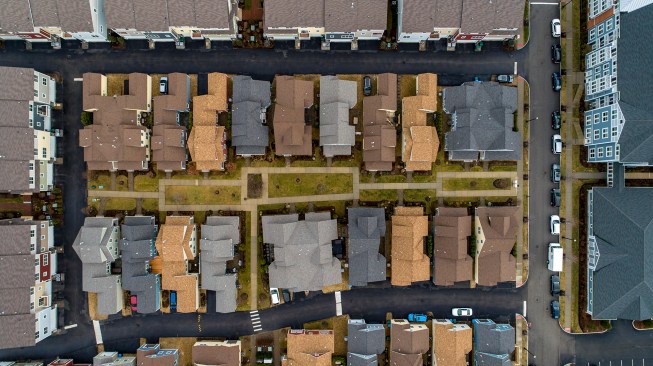
Tom McMahon
Union Point housing
The Union Point I discovered on the ground doesn’t have much in common with the glittering city depicted in the renderings, which maybe shouldn’t come as a surprise. LStar, since its founding in 2007, has done a solid business building and managing typical, somewhat upscale, planned communities, McMansions adjacent to golf courses. Managing partner Corkum told The Boston Globe that the company had “extensive experience building ‘charming New England villages’ ” in places that were not New England, mostly in the south and southwest. The implication was that they’d be great at building a New England village on a site that was actually in New England.
Initially, things went well. Early news stories were largely positive. Corkum charmed the community by setting up a miniature version of Fenway Park for local children and turned part of the property into a backlot where filmmakers shot the finish line scenes in Patriots Day, the 2017 Peter Berg–directed movie about the Boston Marathon bombings. But then, as Corkum told me, community residents he met with convinced him they didn’t want just another subdivision. They wanted something more like a city. “They were pretty adamant about it,” he said. So the local governments rewrote the enabling legislation to remove zoning restrictions and give LStar a more flexible timetable.
“One day, someone on [Elkus’] team said, ‘What you’re doing is a smart city.’ I had to look it up. I had no clue, and I got super excited. I said, ‘Oh yeah. Technology!’ ”
Soon thereafter, Corkum’s vision for the site began, much like a blimp, to inflate: At a Weymouth town council meeting in August 2015, according to a report published in Boston Business Journal, Corkum touted a “100-acre ‘Discovery District’ dedicated for up to 2 million square feet of office space for life sciences, biotech, technology, pharmaceutical research and R&D companies.” He claimed that LStar was in negotiations with four companies that wanted to relocate their headquarters to the development. He promised the “town center would include up to 1 million square feet of commercial development; 1,941 luxury apartments, townhomes and condominiums; and 150,000 square feet of retail.” He claimed that “LStar [was] in negotiations for a 10,000-seat professional soccer and lacrosse stadium.” He promised a hockey rink, a movie theater, and grocery store. “These are all real things on the shelf right now that are being considered,” Corkum said.
Like the Emerald City
More than three years later, those things—unless you count the sports fields as a stadium—have yet to materialize. A few days before Thanksgiving, I met with Mayor Hedlund and his director of planning and community development, Robert J. Luongo. We sat at a long table in the mayor’s office in a handsome 1928 town hall, a replica of Boston’s Old State House. The office had been newly decorated for the holidays by the local garden club, whose members showed up, mid-interview, to have their pictures taken with the mayor.
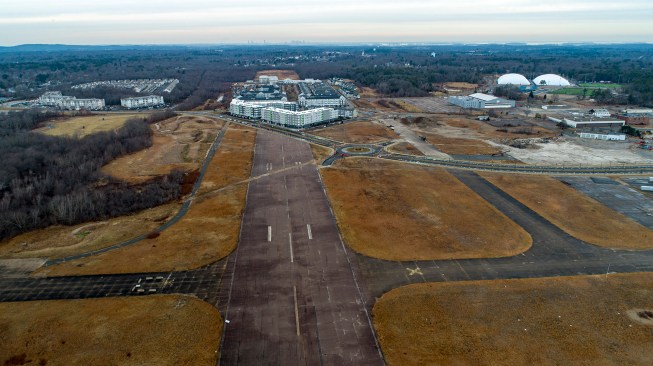
Tom McMahon
Existing residential development at Union Point, including the Mastlight and the aircraft hangar (right)
Hedlund, who took office in 2016, after LStar had arrived, refers to Corkum as a “visionary,” framing the word with air quotes. He doesn’t have an issue with the smart city concept per se, although, as Luongo observed, “It’s a little scary when you look at [the renderings]. It almost looks like the Emerald City.” It’s just that they expected something more straightforward from the development. “Weymouth lacks a real downtown,” Hedlund told me. “The hope was that this would be our downtown eventually. This will be an entertainment center for the town, a commercial center for the town. … The problem is to have a smart city you actually have to have a city, and not just a bunch of tumbleweeds flying down the old airstrip.”
I asked whether the smart city vision had emerged from a planning process that included members of the surrounding communities or public officials like Hedlund. The mayor didn’t think so. “It was more like Kyle would come here and wow us and take out the boards and overwhelm you,” he said. “He latched on to this whole smart city concept,” Hedlund continued. “There were all these high-tech elements. He talked about, in different presentations, heated sidewalks and autonomous vehicles picking up trash.”
Which brings us to the water shutdown. The mayor’s maneuver, which he hopes will help force LStar out of the project, didn’t cut off the supply to those residents already living at the site. Rather, as Hedlund explained, LStar “had to bring in a dedicated water source. Long-term build out, we don’t have enough supply. So in that long-term agreement we negotiated with them, they have a five-year timeline. … They had a year to identify the source, feasibility. Another year to design it and another three years to actually build it. They’re behind the time-line which gives me the ability to end the deal.”

Tom McMahon
As a result, LStar no longer has a source of water to offer to subdevelopers who might want to buy into the project. There was also a similar arrangement with sewage: The town would handle it up to a point, and then the developer would have to supply its own infrastructure. LStar hasn’t yet, nor did it seem interested in ordinary sewers, only smart ones. When asked about waste management, “Corkum would come in and say, ‘We’re going to put these pods all over the site that are like small waste pods that create energy,’” recalls Trufant, who identifies the overreach as an example of the larger problem: “There’s self-driving cars out there, but not the basic things.”
Compare that to how Manfredi outlined the project’s infrastructure in his blog post: “The multinational professional services firm, Arup, has built a complementary and scalable infrastructure master plan to address Union Point’s zero-carbon future and guide the stewardship of its natural water and energy resources. Solar collectors and heat pumps will be part of the power system. Storage batteries will save electric power for future uses, and streets will be designed for pedestrians and bicyclists, as well as our vehicular (autonomous) car future. At least 90% of the roofs without mechanical function, such as solar collection sites, will be green, planted to provide garden spaces that reduce heat-island effects and address storm water runoff, graywater re-use, and green wastewater treatment solutions.”
Manfredi’s message is clear: if you’re serious about building a smart city, you’re making a commitment to invest heavily in infrastructure. You’re not just going to have a reliable water supply and effective waste treatment, but you’re going to have the most sophisticated water distribution and waste treatment possible. In other words, the whole smart city concept is a sham unless there’s infrastructure to support it. Or, as Hedlund frames it: “On one hand we’ve got Dubai here on the boards, and [then on the other Corkum’s] trying to get a water loop in for a fire hydrant or a curb cut in the right place. It’s kind of funny.”
A Metaphorical Elevator Ride
Corkum insists that the requisite infrastructure deals had all been worked out, that the systems would have been in place within three or four years. He attributes the dissatisfaction of local officials to “naiveté” about how long these things take. Yet it’s also clear that Corkum had never tackled a project of this complexity before. The term “smart city” wasn’t even in his vocabulary until he began working with Elkus Manfredi (the firm declined to comment for this story). Of Howard Elkus, one of the firm’s partners, now deceased, Corkum says, “Oh my god, he was like a second father.” Corkum told me how Elkus had taken him on a metaphorical elevator ride to higher and higher levels and, over time, had introduced him to more and more exalted concepts, things like sustainability and the triple bottom line. With each ascent, the plan grew in its sophistication. “One day, someone on [Elkus’] team said, ‘What you’re doing is a smart city,’ ” Corkum recalls. “I had to look it up. I had no clue, and I got super excited. I said, ‘Oh yeah. Technology!’ ”
The first news story featuring the futuristic Elkus Manfredi renderings appeared in HuffPost, which trumpeted, “They’re Building the Sustainable Urban Future Near Boston.” From there, the rhetoric only escalated.
And that was before Amazon entered the picture. In September 2017, a series of articles announced that Union Point, like 200 other cities, had joined the headquarters sweepstakes for the mega-retailer, proposing to build the company’s $5 billion home base. In an interview with The Patriot Ledger, Corkum said, “When you go down their list, everything they’re asking for is here. A hundred acres, 8,000,000 square feet, mass transit, tech friendly and sustainable, that’s Union Point.”
The first news story featuring the futuristic Elkus Manfredi renderings appeared a few weeks later, when HuffPost trumpeted, “They’re Building the Sustainable Urban Future Near Boston.” From there, the rhetoric only escalated: There were announcements that a company called Optimus would be testing its self-driving cars at the complex (true) and that GE would become a partner to the development in the way that Cisco partnered with New Songdo in Korea (difficult to confirm). The most impressive commitment, though, was from a Dutch robotics company called Prodrive that planned to build its U.S. manufacturing facility there on land donated by the developer (also true).
But within a year, the blimp had deflated. Corkum’s version: The trouble began with the lender. LStar had to borrow tens of millions of dollars to execute a project more ambitious than any it had previously undertaken. Suddenly the bank balked. Corkum says his partners sided with the bank and said, “We should bail on as much of the vision as we have to make them happy.” When Corkum refused, he says that they mounted a “smear campaign” in the form of the lawsuit.
That suit was filed in a North Carolina Superior Court in September by Steven Vining, formerly Corkum’s business partner and now, since Corkum has been removed from his position, the “sole manager and member of LStar.” It tells a different story. In a copy originally obtained by The Patriot Ledger, it’s alleged that “Corkum not only mismanaged the project for which he was responsible but converted to his personal use or otherwise fraudulently obtained more than two million dollars of Plaintiff’s money.” The suit is a litany of bewilderingly unorthodox transactions and alleges, among other things, that “under Corkum’s management, no budget or written business plan was ever prepared for the Union Point project,” and also that Corkum’s management of the project left LStar “$70 million in debt.” Corkum recently filed a counter suit, claiming that LStar executives defaulted on a $2.5 million loan specifically to cause Corkum “financial ruin and damage to his reputation in the development industry.”
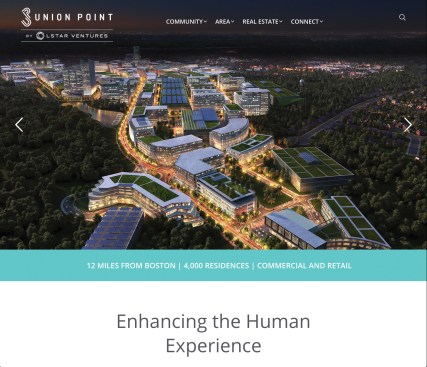
LStar Ventures
A rendering of Union Point from LStar’s website
All of which leaves South Weymouth in an unfortunate bind. “This town’s clamoring for a branded hotel,” Mayor Hedlund told me. “We know that a hotel isn’t going to go in and plant their flag in a wasteland, but there are 23 liquor licenses up there. We’re in the middle of a housing boom. We’re in the middle of an economic boom. … There have been inquiries made and lack of follow through. There are three potential developers now who have come to us and said, ‘We’ve been trying to get in there for two years.’ There was this disconnect. I don’t know why, but there was. If in the middle of this boom you don’t have one groundbreaking in all of 2018, there’s a problem.”
When I met him in November, Hedlund took some comfort from the fact that the site’s one announced commercial tenant, Prodrive, was still planning to build its factory. That optimism proved fleeting. Soon after, Prodrive announced that it was pulling out, and then in early December, LStar was put on “notice of default” by the Southfield Redevelopment Authority, the local board overseeing the project. According to The Patriot Ledger, the developer was accused of “failing to attract development, provide necessary infrastructure and meet its financial obligations.”
LStar was given 30 days to respond to these considerable problems or have its agreement to develop the site terminated. The 30-day period ended in early January, but no announcement has been made yet about LStar’s fate.
A Serendipitous Turn
Adam Greenfield is a London-based urbanist and technology expert. In his 2013 book-length essay, “Against the Smart City,” published by Do projects, he dissected several leading examples of the form, critiquing Cisco’s role in New Songdo, where the company boasted of “intelligent road pricing” and advertisements that adjust in real time to better influence whoever happens to be watching. As Greenfield observed: “It’s as if someone took Minority Report as a shopping catalogue or a punch list rather than a vision of dystopia.”
I contacted Greenfield because I thought he might have a sense of whether it had become commonplace for developers of master-planned golf course communities to promote their projects as smart cities. Is Corkum part of some larger trend? If he is, Greenfield didn’t know of it. But things took a serendipitous turn when Greenfield told me that, in fact, Corkum had contacted him last March, “out of the blue,” because he had written the book on smart cities. Corkum wanted Greenfield to “tiger team us, to tell us what’s wrong with our plan and how we might be able to do this better.”
Corkum went on an elevator ride with his architect to the loftier precincts of urban planning, absorbed the latest buzzwords, and won over the public, at least initially. The smart city concept is endlessly captivating (“Oh yeah! Technology!”), but the realization of that vision remains stubbornly elusive.
Corkum flew him in, and Greenfield spent a few days inspecting Union Point and meeting with the concerned parties. As agreed, Greenfield wrote up a findings document, a detailed, granular critique that touched on numerous issues such as traffic—specifically how to prevent the site, when fully built out, to be overwhelmed by cars—and the lack of affordable housing. Greenfield sent the document off and didn’t hear anything for almost a month. Eventually he got a thank you email from Corkum, who said he was passing the findings along to one of his assistants. Greenfield read it and thought, “If he’s delegating everything to them, it’s the end of the engagement.” Which it was. Greenfield says he still hasn’t been paid.
If there’s a lesson to be learned, it’s that talking a good game is far easier than building a technologically advanced city, or any city for that matter. Corkum went on an elevator ride with his architect to the loftier precincts of urban planning, absorbed the latest buzzwords, and won over the public, at least initially. The smart city concept is endlessly captivating (“Oh yeah! Technology!”), but the realization of that vision remains stubbornly elusive.

Tom McMahon
The decommissioned Volkswagens at Union Point
On my visit to Weymouth, I spent an hour driving around Union Point with Hedlund and Luongo. They made sure I noticed the empty storefronts and pointed out oddities like the pile of mammoth buoys that the still-extant Coast Guard base on the site had gathered for reconditioning. But the strangest thing they showed me was a sweeping field full of cars. As it turns out, the site’s one commercial tenant of any consequence is Volkswagen. Union Point, hypothetical smart city, is the current home to the automaker whose diesel cars were recalled because they were designed to cheat in emissions tests.
An LStar executive told The Patriot Ledger in 2017 that Volkswagen’s presence was “a temporary circumstance and short-term use of the land to add activity to the site.” But the VWs were still there when I visited. The failed smart city as refuge to cars equipped with computers programmed to lie—this requires a literary reference far more dystopian than the Emerald City. Greenfield had one at the ready: “It is the most [J.G.] Ballardian thing I’ve ever seen.”
-
The Smart City That Wasn’t
Union Point was championed as a futuristic development that would help lure Amazon to Boston. Two lawsuits and countless unfulfilled promises later, the project is a case study in how smart-city hype can outpace reality.
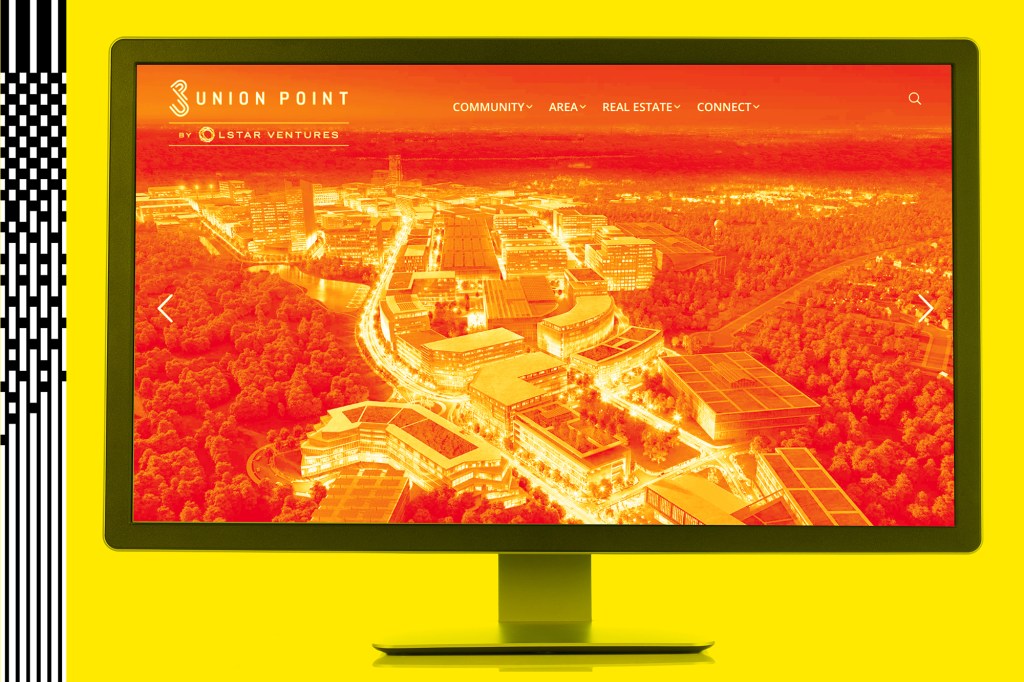
-
Google in Toronto: A Question of Privacy
Google affiliate Sidewalk Labs has prompted a backlash over data privacy with its Quayside smart-city project. Alex Bozikovic reports on what's been overlooked amid the controversy.
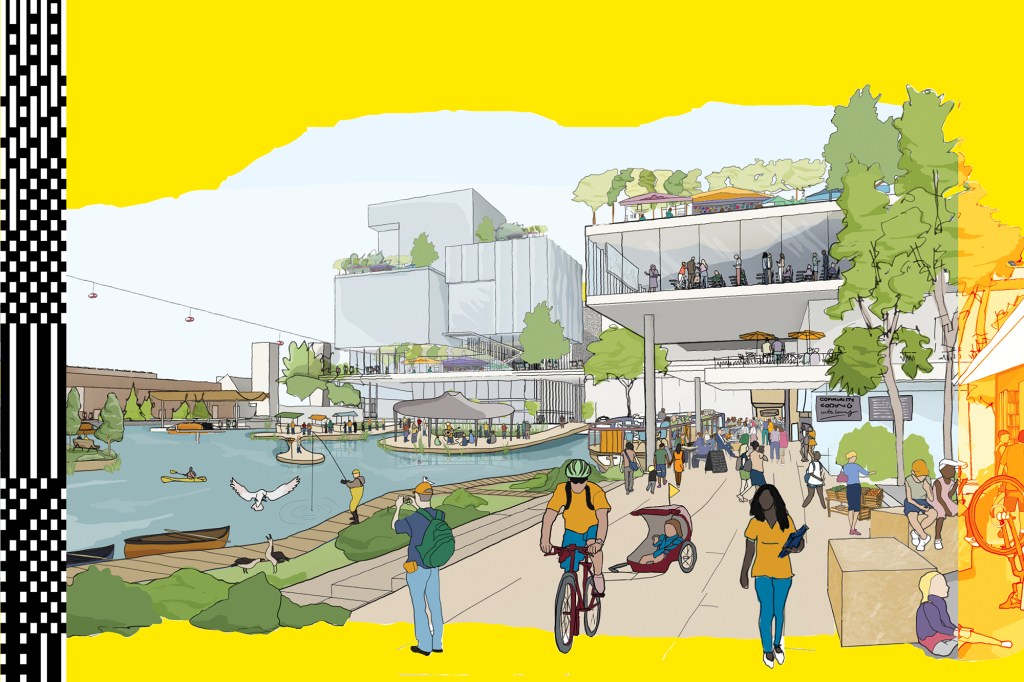
-
Future Proofing the Smart City
The Jurong Lake District in Singapore relies on smart urban planning to achieve resilience and sustainability.

-
Q+A: What Is a Smart City? Three Experts Explain
In a roundtable with ARCHITECT, architect Paul Doherty, policy and sustainability expert Debra Lam, and author Anthony Townsend trade opinions and insights on what the buzzword really means, why the world’s largest companies want a stake, and how architects can step up to the plate.

-
The Smart City as a Billboard of Progress
Saudi Arabia and other authoritarian states are using smart cities to transform their economies—with mixed results.

-
A Holistic Vision of the Smart City
Sensitive urbanism, smart technology, progressive architecture, and careful government stewardship make Royal Seaport in Stockholm a model for smart-city development.
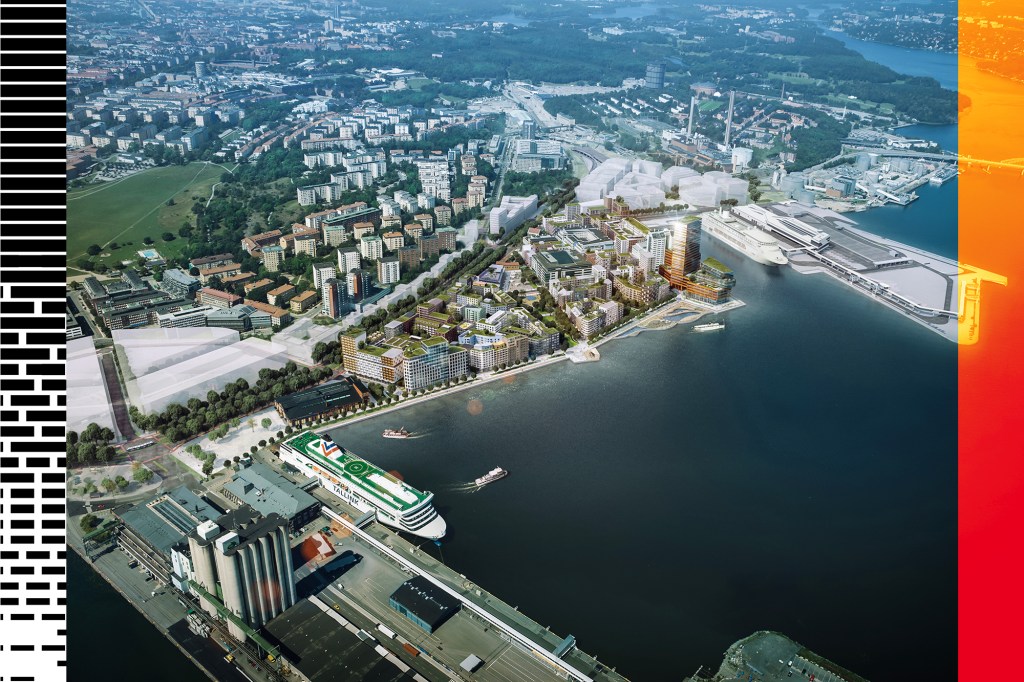
-
A Who’s Who of Smart Cities
Some of the most prominent architects, planners, and critics of the smart city movement.
-
A Pullman Redux?
With their data-rich smart cities of the future, corporations and tech companies are putting a new spin on the company town of old.
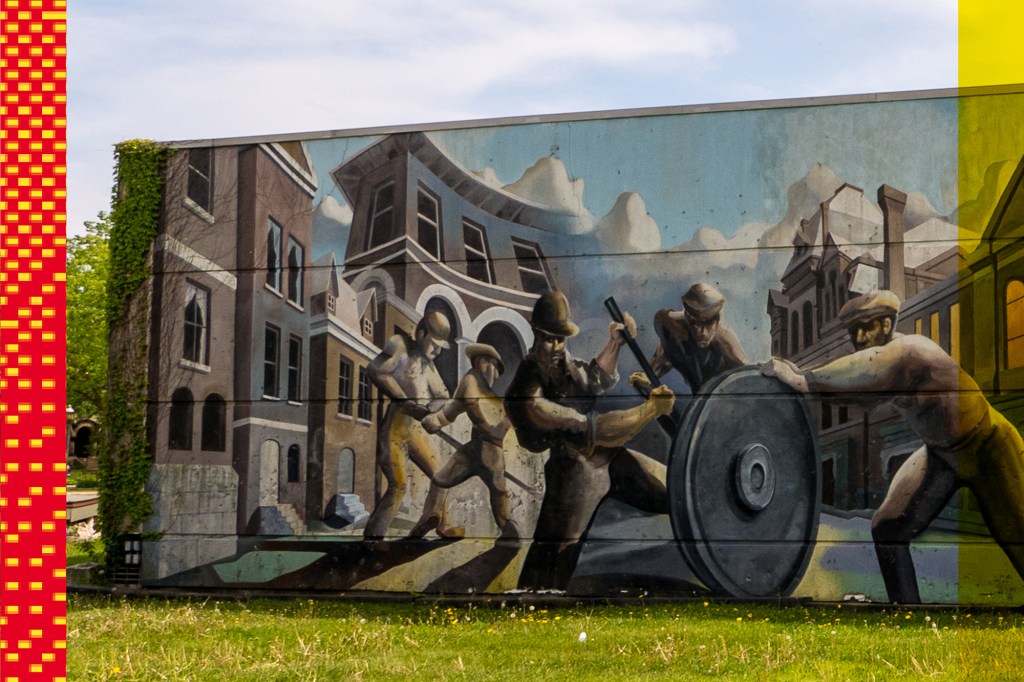
-
Elements of a Smart City
From smart pavers to autonomous vehicles, this is the technology that powers the city of the future.
